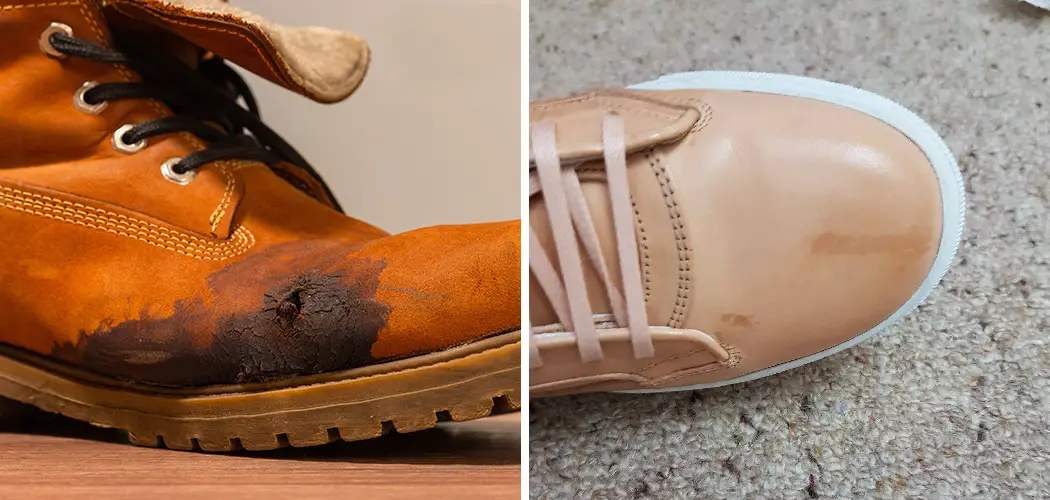Nothing can ruin a nice pair of leather shoes like water stains. Whether they are caused by accidental splashes or rainy days, unsightly spots quickly give away the age and quality of your footwear.
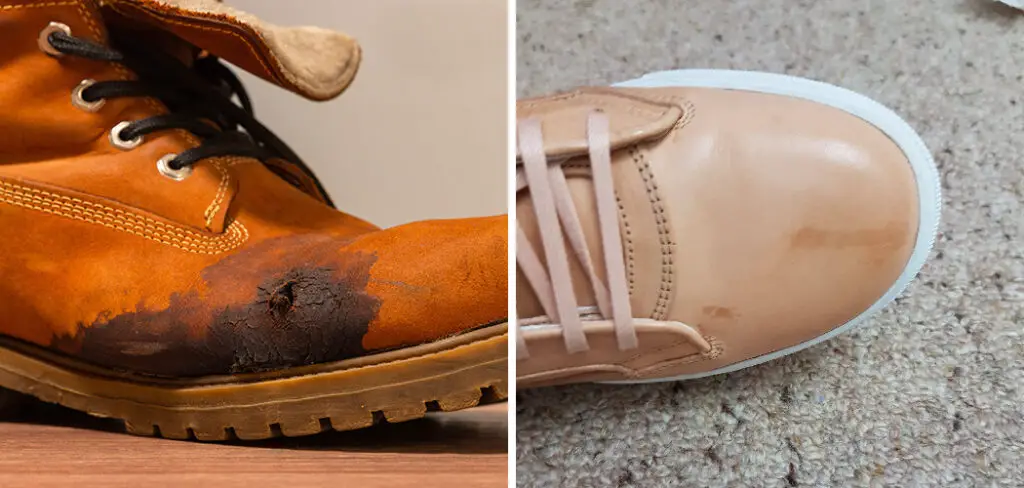
That’s why it’s important to take proper care not only when buying them but long after you have them in your possession. Luckily, with this step-by-step guide, we will show you how to remove water stains from leather shoes so that their beauty and shine last forever!
Step-by-step Guidelines on How to Remove Water Stains From Leather Shoes
Step 1: Clean the Leather Surface
Moisten a soft cloth with plain water and gently wipe the leather to remove dirt, dust, and other debris. Wipe it until the surface is completely clean. It’s important to remove any dirt or debris before proceeding with the stain removal process. But make sure not to over-saturate the cloth with water, as this might damage the leather. Otherwise, use a soft brush to scrub the leather in a gentle manner.
Step 2: Preparing the Leather Conditioner
Mix one part natural leather conditioner and two parts white vinegar in a small bowl. Make sure to use a high-quality leather conditioner that does not contain any harsh chemicals. This mixture will help loosen the water stains from the leather surface and make them easier to remove.
It’s important to use white vinegar as it will not damage the leather. It will also help to keep the leather moisturized and prevent it from cracking.
Step 3: Applying Conditioner on Leather
Apply a thin layer of the conditioner-vinegar mixture onto the leather using a soft cloth. Rub it gently into the leather in circular motions, making sure not to saturate it too much. Let it sit for 10-15 minutes. This will help loosen the water stains and make them easier to remove. It’s important to use a soft cloth to avoid damaging the leather and making the water stains worse.
Step 4: Wipe Off the Conditioner
After the conditioner has been left to sit for 10-15 minutes, use a dry cloth to wipe away any excess. Remove as much of the mixture as possible. Do not rub too hard, otherwise, you may damage the leather surface. This will help ensure that the leather is not over-saturated with water or conditioner. It’s important to use a clean cloth and avoid transferring dirt or debris onto the leather.
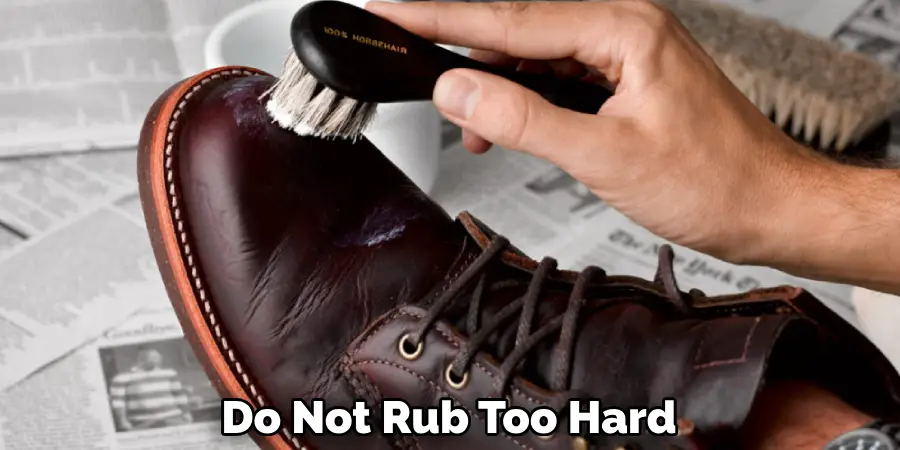
Step 5: Heat the Leather
Use a hair dryer to blow hot air onto the leather surface. This will further help loosen up the water stains and make them easier to remove. Keep doing this until you no longer see any moisture on the leather surface.
But be careful not to overheat the leather as it can cause permanent damage. It’s important to keep the heat at a moderate level and move the dryer constantly so that you don’t apply too much heat to one area of the leather.
Step 6: Wipe Away Any Remaining Mixture
Once again, use a soft cloth to wipe away any remaining leather conditioner-vinegar mixture. Make sure all the residue is gone before moving on to the next step. It’s important to clean the surface properly before proceeding with any further treatment.
It’s also a good idea to vacuum the surface of your leather shoes with an upholstery attachment to remove any dirt or debris that may have been left behind.
Step 7: Rub in Saddle Soap
Take a small amount of saddle soap and rub it into the affected area using a damp cloth. This will help further cleanse the leather surface and remove any water stains. This step may be repeated multiple times depending on the severity of the stain. It’s important to use a damp cloth and not a wet one as too much water can cause damage to the leather.
Step 8: Wipe Off the Soap
Using a clean damp cloth, wipe away any remaining saddle soap residue. The leather should now be free of water stains and ready for the next step. But make sure to wipe off all the soap residue as it can dry out the leather and cause damage. It’s important to use a dam cloth and not a wet one, as too much water can damage the leather.
Step 9: Apply a Leather Protectant
Apply a thin layer of leather protectant on the affected area This will help protect the leather from water and other elements, allowing it to last longer. Let the protectant dry completely before on to the next step. It’s important to use a high-quality leather protectant that does not contain any harsh chemicals.
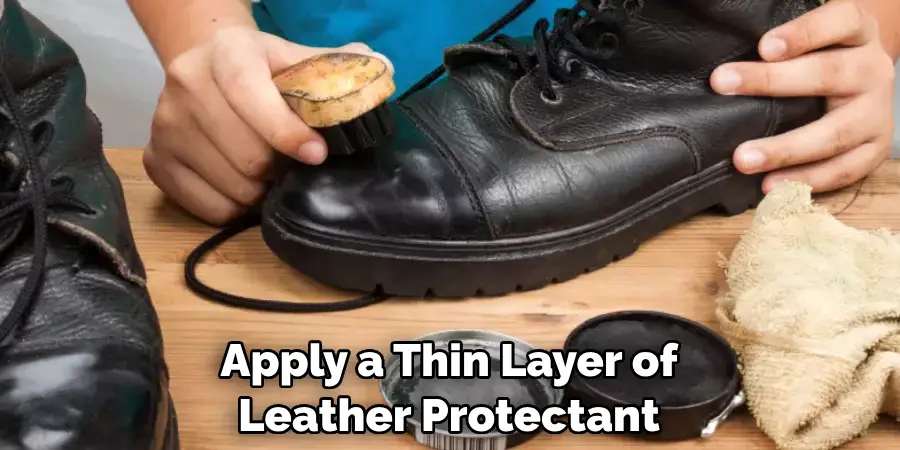
Step 10: Buff It Out
Using a soft cloth, buff out any remaining residue or dirt that may have been left behind by the cleaning process. This will help restore the natural shine of the leather and make it look like new. You should also buff out the entire shoe to make sure it looks even. It’s important to use a soft cloth and avoid rubbing too hard, as this may damage the leather.
Step 11: Enjoy Your Clean and Shiny Leather Shoes!
That’s it! You now have a pair of clean, shiny leather shoes that you can wear with pride. All that’s left to do is enjoy them for as long as possible. And if it ever rains again, you know exactly what to do! Always make sure to take proper care of your leather shoes and use these steps whenever necessary.
To ensure the best results, it’s important to follow all of the steps on how to remove water stains from leather shoes carefully. If you find that water stains have reappeared after a few days or weeks, then repeat the steps until they are completely gone. Paying attention to your leather shoes’ care will help them look their best for years to come.
Frequently Asked Questions
Q: Can I Use Rubbing Alcohol to Remove Water Stains From Leather?
A: Rubbing alcohol can be used as a last resort, but it should not be your first choice. While it can work in some cases, it can also damage the leather and cause discoloration. We recommend using the steps outlined above for the best results.
Q: How Can I Prevent Water Stains From Reappearing?
A: The best way to prevent water stains from reappearing is to apply a waterproof protectant or sealant on the leather surface after every cleaning. This will help keep the leather protected and prevent water from seeping in. Additionally, you should always wipe off any excess moisture on the leather surface as soon as possible to avoid stains.
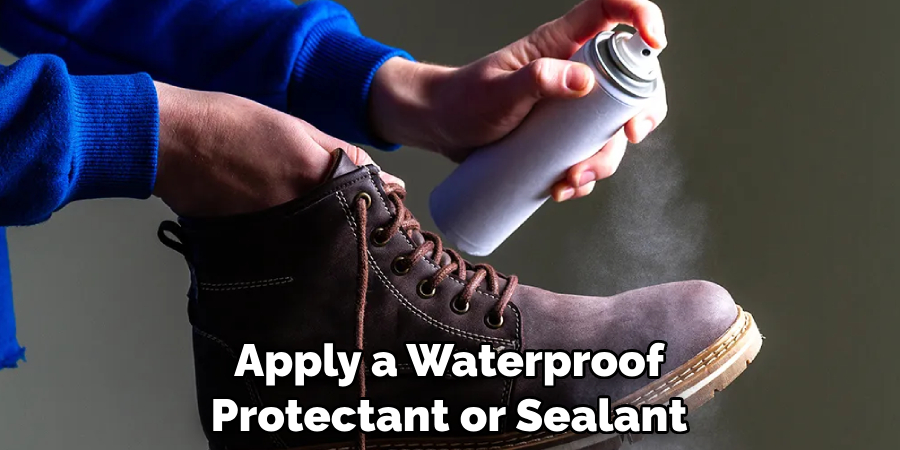
Q: Can Water Stains Be Removed From Suede Leather Shoes? This is the best way to ensure that the leather remains undamaged.
A: Yes, water stains can be removed from suede leather shoes. However, the process is slightly different and requires more care as suede is a delicate material. First, you should brush away any dirt or debris from the surface with a soft-bristled brush.
Then, use a mixture of equal parts white vinegar and lukewarm water to spot-treat the stains. Gently scrub the affected area with a toothbrush and wipe away any remaining residue with a damp cloth. Let it dry completely before applying a suede protectant to prevent future stains from forming.
Q: What Can I Do to Help My Leather Shoes Last Longer?
A: To help your leather shoes last longer, it’s important to take good care of them. This includes cleaning and conditioning the leather on a regular basis t and using a waterproof protectant or sealant to keep them protected from water and other elements.
Additionally, avoid wearing your leather shoes in wet or muddy conditions as this can cause damage. Finally, store your leather shoes in a cool, dry place when they are not being worn. Following these steps will help ensure that your leather shoes stay looking great for years to come!

Conclusion
With all of the options listed, it’s easy to say that removing water spots and other stains from leather shoes doesn’t have to be a difficult task! Whether it be using club soda, white vinegar, or another household item, everyone now has the tools they need to keep their shoes looking as good as new. Remember to always be careful with whatever method you choose.
Different materials require different treatments — if you are in doubt, consult a professional for more information and assistance! The best way to protect your leather shoes is by taking proper care of them: ensure they are kept in dry conditions at all times.
Taking this step will help prevent any potential staining before it begins, allowing you to celebrate your SHOEs wearing them for years to come! Thanks for reading this article on how to remove water stains from leather shoes.

